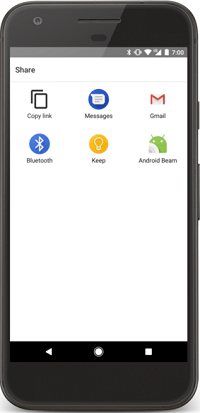
Step 3 − Add the following code to src/MainActivity.

Step 2 − Add the following code to res/layout/activity_main.xml. Step 1 − Create a new project in Android Studio, go to File ⇒ New Project and fill all required details to create a new project. In their most basic form, explicit Intents are straightforward.This example demonstrates how to make a phone call using intent in Android using Kotlin These are used to start an application component within your control–a class or activity to which you have access. If you’re developing a multi-activity application, you will likely use a lot of explicit Intents.

Intents come in two types: explicit and implicit. What is onBackPressed() in Android, in Android with Demo App., /Start a New Project in Android Studio. Further on in the documentation, it gives the more approachable description that “ most significant use is in the launching of activities, where it can be thought of as the glue between activities.” Okay, that makes more sense and explains why they seem to be involved in so many things. Kotlin go back to previous intent android. Android’s official documentation defines an Intent as “an abstract description of an operation to be performed”…helpful.

Let’s start out by getting a baseline definition. Android Studio Google Play Jetpack Kotlin Docs Overview Guides Reference Samples Design & Quality Games Android Studio Android API Reference. My goal with this post is to share what I have learned about these powerful abstractions and to provide a useful and interesting example in the process. However, after doing this a few times myself, my lack of understanding kept nagging me to dig deeper. Step 2 Add the following code to res/layout/activitymain.xml. Step 1 Create a new project in Android Studio, go to File New Project and fill all required details to create a new project. This example demonstrates how to Send an Intent to browser to open specific URL using Kotlin. It is all too easy to copy-paste a few lines from a StackOverflow answer and never come back to it because things seem to just work. Kotlin Apps/Applications Mobile Development. This may be because Intents tend to work quite smoothly when used in the right circumstances. Send Email using Intent - Android Studio - Kotlin. GitHub - alexisegf/MovieGeek-MVI-Conductor-Sample-App: Sample MVI (M. Until recently, all I knew about them was that they were used in everything from navigation within an application to media playback and interacting with external applications.ĭespite the many uses of Intents, I never ran across a great explanation of their purpose until I dug into the Android documentation. Sample MVI (Mode-View-Intent) app that is written completely in kotlin, uses rxjava2, and uses Conductor instead of fragments. Intents show up pretty regularly in the official Android tutorials and frequently appear in StackOverflow answers. If you have spent much time with Android development, you have likely run across Android’s Intent object.


 0 kommentar(er)
0 kommentar(er)
